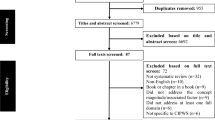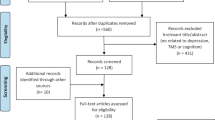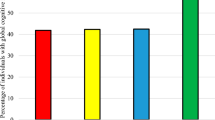Abstract
Accumulating evidence suggests the critical role of cortical thinning in the pathophysiology of major depressive disorder. However, the association of cortical thickness and cognitive impairment with treatment-resistant depression (TRD) has rarely been investigated. In total, 48 adult patients with TRD and 48 healthy controls were recruited and administered a series of neurocognitive and neuroimaging examinations, including 1-back and 2-back working memory tasks and brain magnetic resonance imaging (MRI). Whole-brain cortical thickness analysis was performed to investigate the differences in the cortical thickness between patients with TRD and controls. The patients had reduced cortical thickness in the frontal cortex, particularly at the left frontal pole, left inferior frontal cortex, and left anterior cingulate cortex, and left middle temporal cortex compared with the healthy controls. Moreover, in the 2-back working memory task, the cortical thickness in the left frontal pole and left anterior cingulate cortex was positively associated with mean error in the patients, but not in the controls. Reduced cortical thickness in the frontal pole and anterior cingulate cortex is associated with TRD and related cognitive impairment. Our study indicated the crucial effects of the frontal and temporal cortical thickness on the pathophysiology of TRD and cognitive impairment in patients with TRD.


Similar content being viewed by others
References
Backhausen, L. L., Herting, M. M., Buse, J., Roessner, V., Smolka, M. N., & Vetter, N. C. (2016). Quality Control of Structural MRI Images Applied Using FreeSurfer-A Hands-On Workflow to Rate Motion Artifacts. Frontiers in Neuroscience, 10, 558–558.
Baeken, C., Duprat, R., Wu, G. R., De Raedt, R., & van Heeringen, K. (2017). Subgenual Anterior Cingulate-Medial Orbitofrontal Functional Connectivity in Medication-Resistant Major Depression: A Neurobiological Marker for Accelerated Intermittent Theta Burst Stimulation Treatment? Biological Psychiatry Cognitive Neuroscience and Neuroimaging, 2, 556–565.
Bech, P. (2006). Rating scales in depression: Limitations and pitfalls. Dialogues in Clinical Neuroscience, 8, 207–215.
Chao, L. L., Haxby, J. V., & Martin, A. (1999). Attribute-based neural substrates in temporal cortex for perceiving and knowing about objects. Nature Neuroscience, 2, 913–919.
Dale, A. M., Fischl, B., & Sereno, M. I. (1999). Cortical surface-based analysis. I. Segmentation and surface reconstruction. Neuroimage., 9, 179–194.
Dignam, P. (2009). Treatment-resistant depression. The Australian and New Zealand Journal of Psychiatry., 43, 87.
Dirette, D. (2002). The development of awareness and the use of compensatory strategies for cognitive deficits. Brain Injury, 16, 861–871.
Donix, M., Haussmann, R., Helling, F., Zweiniger, A., Lange, J., Werner, A., Donix, K. L., Brandt, M. D., Linn, J., Bauer, M., & Buthut, M. (2018). Cognitive impairment and medial temporal lobe structure in young adults with a depressive episode. Journal of Affective Disorders, 237, 112–117.
Drevets, W. C., Savitz, J., & Trimble, M. (2008). The subgenual anterior cingulate cortex in mood disorders. CNS Spectrums, 13, 663–681.
Fekadu, A., Wooderson, S. C., Markopoulo, K., Donaldson, C., Papadopoulos, A., & Cleare, A. J. (2009). What happens to patients with treatment-resistant depression? A systematic review of medium to long term outcome studies. Journal of Affective Disorders., 116, 4–11.
Fischl, B., & Dale, A. M. (2000). Measuring the thickness of the human cerebral cortex from magnetic resonance images. Proceedings of the National Academy of Sciences of the United States of America., 97, 11050–11055.
Fischl, B., Sereno, M. I., & Dale, A. M. (1999a). Cortical surface-based analysis. II: Inflation, flattening, and a surface-based coordinate system. NeuroImage, 9, 195–207.
Fischl, B., Sereno, M. I., Tootell, R. B., & Dale, A. M. (1999b). High-resolution intersubject averaging and a coordinate system for the cortical surface. Human Brain Mapping, 8, 272–284.
Furtado, C. P., Hoy, K. E., Maller, J. J., Savage, G., Daskalakis, Z. J., & Fitzgerald, P. B. (2013). An investigation of medial temporal lobe changes and cognition following antidepressant response: A prospective rTMS study. Brain Stimulation, 6, 346–354.
Hagler, D. J., Jr., Saygin, A. P., & Sereno, M. I. (2006). Smoothing and cluster thresholding for cortical surface-based group analysis of fMRI data. NeuroImage, 33, 1093–1103.
Howland, R. H. (2008). Sequenced Treatment Alternatives to Relieve Depression (STAR*D). Part 2: Study outcomes. Journal of Psychosocial Nursing and Mental Health Services., 46, 21–24.
Jarnum, H., Eskildsen, S. F., Steffensen, E. G., Lundbye-Christensen, S., Simonsen, C. W., Thomsen, I. S., Frund, E. T., Theberge, J., & Larsson, E. M. (2011). Longitudinal MRI study of cortical thickness, perfusion, and metabolite levels in major depressive disorder. Acta Psychiatrica Scand., 124, 435–446.
Kuperberg, G. R., Broome, M. R., McGuire, P. K., David, A. S., Eddy, M., Ozawa, F., Goff, D., West, W. C., Williams, S. C., van der Kouwe, A. J., Salat, D. H., Dale, A. M., & Fischl, B. (2003). Regionally localized thinning of the cerebral cortex in schizophrenia. Archives of General Psychiatry, 60, 878–888.
Li, C. T., Lin, C. P., Chou, K. H., Chen, I. Y., Hsieh, J. C., Wu, C. L., Lin, W. C., & Su, T. P. (2010). Structural and cognitive deficits in remitting and non-remitting recurrent depression: A voxel-based morphometric study. NeuroImage, 50, 347–356.
Lim, H. K., Jung, W. S., Ahn, K. J., Won, W. Y., Hahn, C., Lee, S. Y., Kim, I., & Lee, C. U. (2012). Regional cortical thickness and subcortical volume changes are associated with cognitive impairments in the drug-naive patients with late-onset depression. Neuropsychopharmacology, 37, 838–849.
Little, A. (2009). Treatment-resistant depression. American Family Physician, 80, 167–172.
Oertel-Knochel, V., Reuter, J., Reinke, B., Marbach, K., Feddern, R., Alves, G., Prvulovic, D., Linden, D. E., & Knochel, C. (2015). Association between age of disease-onset, cognitive performance and cortical thickness in bipolar disorders. Journal of Affective Disorders, 174, 627–635.
Onitsuka, T., Shenton, M. E., Salisbury, D. F., Dickey, C. C., Kasai, K., Toner, S. K., Frumin, M., Kikinis, R., Jolesz, F. A., & McCarley, R. W. (2004). Middle and inferior temporal gyrus gray matter volume abnormalities in chronic schizophrenia: An MRI study. The American Journal of Psychiatry, 161, 1603–1611.
Papmeyer, M., Giles, S., Sussmann, J. E., Kielty, S., Stewart, T., Lawrie, S. M., Whalley, H. C., & McIntosh, A. M. (2015). Cortical thickness in individuals at high familial risk of mood disorders as they develop major depressive disorder. Biological Psychiatry, 78, 58–66.
Phillips, J. L., Batten, L. A., Tremblay, P., Aldosary, F., Blier, P. (2015). A Prospective, Longitudinal Study of the Effect of Remission on Cortical Thickness and Hippocampal Volume in Patients with Treatment-Resistant Depression. The International Journal of Neuropsychopharmacology, 18
Reuter, M., Tisdall, M. D., Qureshi, A., Buckner, R. L., van der Kouwe, A. J. W., & Fischl, B. (2015). Head motion during MRI acquisition reduces gray matter volume and thickness estimates. NeuroImage, 107, 107–115.
Reynolds, S., Carrey, N., Jaworska, N., Langevin, L. M., Yang, X. R., & Macmaster, F. P. (2014). Cortical thickness in youth with major depressive disorder. BMC Psychiatry, 14, 83.
Rosas, H. D., Liu, A. K., Hersch, S., Glessner, M., Ferrante, R. J., Salat, D. H., van der Kouwe, A., Jenkins, B. G., Dale, A. M., & Fischl, B. (2002). Regional and progressive thinning of the cortical ribbon in Huntington’s disease. Neurology, 58, 695–701.
Saleh, A., Potter, G. G., McQuoid, D. R., Boyd, B., Turner, R., MacFall, J. R., & Taylor, W. D. (2017). Effects of early life stress on depression, cognitive performance and brain morphology. Psychological Medicine, 47, 171–181.
Schmaal, L., Hibar, D. P., Samann, P. G., Hall, G. B., Baune, B. T., Jahanshad, N., Cheung, J. W., van Erp, T. G. M., Bos, D., Ikram, M. A., Vernooij, M. W., Niessen, W. J., Tiemeier, H., Hofman, A., Wittfeld, K., Grabe, H. J., Janowitz, D., Bulow, R., Selonke, M., … Veltman, D. J. (2017). Cortical abnormalities in adults and adolescents with major depression based on brain scans from 20 cohorts worldwide in the ENIGMA Major Depressive Disorder Working Group. Molecular Psychiatry, 22, 900–909.
Serra-Blasco, M., Portella, M. J., Gomez-Anson, B., de Diego-Adelino, J., Vives-Gilabert, Y., Puigdemont, D., Granell, E., Santos, A., Alvarez, E., & Perez, V. (2013). Effects of illness duration and treatment resistance on grey matter abnormalities in major depression. The British Journal of Psychiatry : The Journal of Mental Science., 202, 434–440.
Suh, J. S., Schneider, M. A., Minuzzi, L., MacQueen, G. M., Strother, S. C., Kennedy, S. H., & Frey, B. N. (2019). Cortical thickness in major depressive disorder: A systematic review and meta-analysis. Progress in Neuro-Psychopharmacology and Biological Psychiatry, 88, 287–302.
Tu, P. C., Chen, L. F., Hsieh, J. C., Bai, Y. M., Li, C. T., & Su, T. P. (2012). Regional cortical thinning in patients with major depressive disorder: A surface-based morphometry study. Psychiatry Research, 202, 206–213.
Twamley, E. W., Thomas, K. R., Burton, C. Z., Vella, L., Jeste, D. V., Heaton, R. K., & McGurk, S. R. (2019). Compensatory cognitive training for people with severe mental illnesses in supported employment: A randomized controlled trial. Schizophrenia Research, 203, 41–48.
Uher, R., Farmer, A., Maier, W., Rietschel, M., Hauser, J., Marusic, A., Mors, O., Elkin, A., Williamson, R. J., Schmael, C., Henigsberg, N., Perez, J., Mendlewicz, J., Janzing, J. G., Zobel, A., Skibinska, M., Kozel, D., Stamp, A. S., Bajs, M., … Aitchison, K. J. (2008). Measuring depression: Comparison and integration of three scales in the GENDEP study. Psychological Medicine, 38, 289–300.
WHO (2008). Projections of mortality and burden of disease, 2004–2030
Zhao, K., Liu, H., Yan, R., Hua, L., Chen, Y., Shi, J., Yao, Z., & Lu, Q. (2017). Altered patterns of association between cortical thickness and subcortical volume in patients with first episode major depressive disorder: A structural MRI study. Psychiatry Res Neuroimaging., 260, 16–22.
Zimmermann, Pa. F. B. (1997). Test for Attentional Performance (TAP). Psytest Press.
Funding
The study was supported by grant from Taipei Veterans General Hospital (V106B-020, V107B-010, V107C-181, V108B-012, V110C-025, V110B-002), Yen Tjing Ling Medical Foundation (CI-109-21, CI-109-22, CI-110-30) and Ministry of Science and Technology, Taiwan (107-2314-B-075-063-MY3, 108-2314-B-075 -037, 110-2314-B-075-026, 110-2314-B-075-024-MY3). The funding source had no role in any process of our study.
Author information
Authors and Affiliations
Contributions
Drs MHC and TPS designed the study and drafted the manuscript; Ms WCC and Dr PCT analyzed the imaging data and performed the statistics; Drs WCL, CTL, WSH, YMB, and SJT critically reviewed and revised the manuscripts; All authors approved the publication.
Corresponding authors
Ethics declarations
Compliance with ethical standard
This study was performed in accordance with the Declaration of Helsinki and was approved by the Taipei Veterans General Hospital Institutional Review Board. Informed consent was provided by all of the participants.
Conflict of interest
No conflict of interest.
Financial disclosure
All authors have no financial relationships relevant to this article to disclose.
Additional information
Publisher’s note
Springer Nature remains neutral with regard to jurisdictional claims in published maps and institutional affiliations.
Supplementary Information
Below is the link to the electronic supplementary material.
Rights and permissions
About this article
Cite this article
Chen, MH., Chang, WC., Tu, PC. et al. Association of cognitive impairment and reduced cortical thickness in prefrontal cortex and anterior cingulate cortex with treatment-resistant depression. Brain Imaging and Behavior 16, 1854–1862 (2022). https://doi.org/10.1007/s11682-021-00613-6
Accepted:
Published:
Issue Date:
DOI: https://doi.org/10.1007/s11682-021-00613-6




